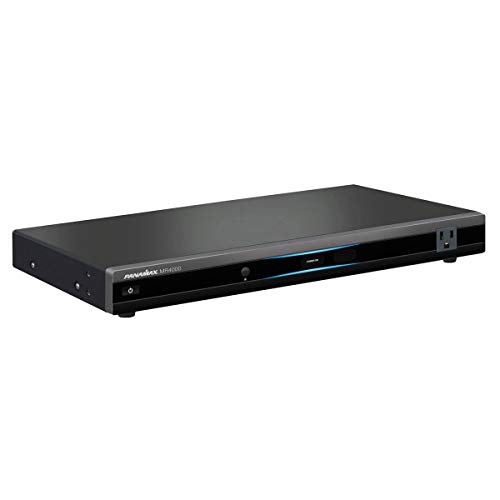It's no secret that a well-run home theatre can provide hours of entertainment. But what many people don't know is that there are ways to make the experience even better. One way is to use a home theatre power manager. There are a number of different home theatre power managers on the market, so it's important to do your research before you buy one.
Make sure to choose one that fits your needs and budget. And remember, the more features the manager has, the more expensive it will be. In this article, we'll take a look at some of the best home theatre power managers available. So that you can make an informed decision about which one is right for you.
What Is A Home Theatre Power Manager?
A home theater power manager is a device that helps to regulate the power in a home theater system. It is designed to manage the flow of electricity so that the various components in the system can operate properly. The power manager also helps to protect the components from damage by preventing them from drawing too much power.
In addition, the power manager can help to improve the overall performance of the home theater system by minimizing interference between the different components. By managing the power in a home theater system, a power manager can help to improve the quality of the sound and picture. It can also help to improve the overall efficiency of the system.
Best Home Theatre Power Manager
After doing some research, we've compiled a list of the best home theatre power managers.
1. Panamax MR4300 Power Line Conditioner and Surge Protector
The Panamax MR4300 Power Line Conditioner and Surge Protector are specifically engineered to provide the best protection against current fluctuations and power spikes. With nine filtered and protected outlets, protect or disconnect technology, automatic voltage monitoring (AVM), and Panamax level three noise filtration, this power conditioner is the ideal choice for protecting your valuable electronics.
The MR4300 is also equipped with an LED status indicator, which provides a visual indication of the unit's status at a glance. In addition, the MR4300 features a 12-volt trigger input/output, which allows you to connect the unit to an external trigger device for convenient operation.
With over 30 years of innovation, multiple patents granted, and millions of units sold, the MR4300 is a well-known and trusted brand. Additionally, the product comes with a lifetime connected equipment protection policy and a lifetime product warranty so that you can be confident in its quality.
In terms of performance, the MR4300 features advanced surge protection and ac power distribution circuitry that can defend against even the strongest surges. Plus, it includes a line noise filter that helps to improve the quality of your power by reducing interference. As a result, you can enjoy clean, reliable power for your home or office.
Pros
- Equipped with an LED status indicator
- Comes with a lifetime connected equipment protection policy
- Features advanced surge protection circuitry
- Includes a line noise filter
Cons
- Some users find the unit difficult to install
2. Furman Elite15i Linear Filtering Ac Power Conditioner
Amazon productThe Furman ELITE15i Linear Filtering AC Power Conditioner is a top-of-the-line power conditioner that uses Linear Filtering Technology (LiFT) to provide unparalleled audio and video clarity. E.V.S. (Extreme Voltage Shutdown) safeguards equipment from hazardous overvoltage conditions and the unit itself is designed to be rack mounted for easy installation.
The Furman ELITE15i Linear Filtering AC Power Conditioner is a great choice for those who want the best possible audio and video quality from their equipment.
The zero-ground contamination circuitry protects against damaging ground Loop Interference, while the 12-volt triggering allows for remote control with a bypass option. This power conditioner is perfect for preventing interference in audio/video systems and ensuring optimal performance from your equipment.
Pros
- E.V.S. protects equipment from overvoltage
- LiFT provides unequaled audio/video quality
- 12-volt triggering for remote control
Cons
- Sometimes causes problems with turntables
3. Panamax Mr4000 8-Outlet Home Theater Power Management
The Panamax MR4000 8-Outlet Home Theater Power Management is engineered to provide protected and filtered power to systems. The MR4000 features 11 total outlets–8 rear-panel surge-protected outlets, 2 front-panel surge-protected outlets, and 1 unswitched outlet–to connect all of your home theater components.
The Panamax MR4000 8-Outlet Home Theater Power Management also guards against damaging current fluctuations and dirty power spikes. Plus, the two included USB charging ports allow you to keep your mobile devices charged and ready to go.
The Panamax MR4000 also features a voltage indicator and an isolation transformer. The isolation transformer helps to reduce RFI and EMI noise. The Panamax MR4000 is a great choice for anyone looking to protect their home theater equipment.
Pros
- 11 total outlets
- Features an isolation transformer
- Includes two USB charging ports
- Voltage indicator
Cons
- May be too expensive for some budgets
What To Consider When Choosing the Best Home Theatre Power Manager?
Now that you know a little more about home theater power managers, it's time to start shopping for the perfect one for your needs. Here are a few things to keep in mind as you shop:
1. Number of Outlets
The first thing you'll want to consider is the number of outlets. How many devices do you need to power? Make sure to choose a power strip with enough outlets to accommodate all of your devices. It's always better to have too many outlets than not enough.
The number of outlets is an important consideration when choosing a home theatre power manager. You'll want to make sure to choose a power strip with enough outlets to accommodate all of your devices. It's always better to have too many outlets than not enough.
2. Power Capacity & Amperage
When choosing a power manager for your home theatre, it's important to consider both the capacity (in watts) and amperage (in amps). The capacity is the maximum amount of power that the device can handle, while the amperage is the maximum amount of current that it can provide.
To calculate the power capacity of the power supply you need, simply add up the wattage of all the devices you plan to plug into the power manager. As a rule of thumb, most home theatre systems require at least 500 watts of power.
The amperage rating is a little trickier to calculate, as it depends on the type of devices you're using. If you're only powering low-wattage devices like lamps and televisions, then a power manager with a lower amperage rating will suffice. However, if you're powering high-wattage devices like amplifiers and receivers, you'll need a power manager with a higher amperage rating to prevent overloads.
3. Voltage Compatibility
Another important consideration is voltage compatibility. Most home theatre power managers are designed for use with standard 120-volt AC power. However, some devices require different voltages (like 240-volt AC) to operate properly.
Make sure to check the voltage requirements of all the devices you plan to plug into the power manager. If any of them require a different voltage than what the power manager is rated for, you'll need to choose a different model or use a voltage converter. To be on the safe side, it's always best to choose a power manager with a higher voltage rating than what you need.
4. Noise Reduction
Noise reduction is an important consideration if you plan to use your home theatre power manager in a sensitive environment like a recording studio or home theatre. Look for a power manager with built-in noise reduction features like isolation transformers and surge protection.
These features will help to reduce the amount of electromagnetic interference (EMI) and radio frequency interference (RFI) that your devices produce. Some power managers even have built-in filters that can further reduce noise.
5. The Price
Of course, price is always a consideration when shopping for any type of product. Home theatre power managers range in price from around $30 to $500 or more. The most important thing is to make sure you choose a power manager that fits your budget and meets your needs. There's no need to spend more than you have to on a power manager. But it's also important to make sure you don't skimp on features and end up with a power manager that doesn't meet your needs.
Some people skimp on features and end up with a power manager that doesn't meet their needs. If you want to avoid this, make sure to choose a power manager that has all the features you need. It's also important to make sure you don't spend more than you have on a power manager. The most important thing is to find one that fits your budget and meets your needs.
6. Ease of Use
Finally, you'll want to consider the ease of use when choosing a home theatre power manager. Look for a power manager with easy-to-use features like LED indicator lights and clearly labeled outlets. You should also make sure that the power cord is long enough to reach all of your devices.
Some power managers even come with remote controls, which can be very handy if you need to power on or off your devices from a distance. For the ultimate convenience, look for a power manager with a built-in timer. This feature allows you to automatically power on or off your devices at specific times.
FAQs
Is a power conditioner necessary?
No, a power conditioner is not necessary for most home theatre setups. However, it can be beneficial if you have sensitive equipment or live in an area with unreliable power. A power conditioner can help to protect your devices from power surges and other electrical problems. It can also help to improve the quality of your power, which can result in a better picture and sound quality.
Is a power conditioner the same as a power surge protector?
No, it's not the same as a surge protector. It is designed to improve the quality of your power, while a surge protector is designed to protect your devices from power outages. Both devices are beneficial, but they serve different purposes.
Do I need a power conditioner if I have a surge protector?
No, you do not need a power conditioner if you have a surge protector. However, they can be used together to provide the best possible protection for your devices. If you live in an area with unreliable power or if you have sensitive equipment, we recommend using both a power conditioner and a surge protector.
How do I know if my equipment is compatible with a power conditioner?
Most home theatre equipment is compatible with power conditioners. However, you should always check the specifications of your equipment to make sure it can handle the voltage and amperage of the power conditioner. You can usually find this information about power conditioning in the owner's manual or on the manufacturer's website.
Can I use a power conditioner with my computer?
Yes, you can use a power conditioner with your computer, like audio equipment. In fact, we recommend it if you live in an area with unreliable power or if you have sensitive equipment. Just make sure to check the specifications of your equipment to make sure it can handle the voltage and amperage of the power conditioner.
Conclusion
All of the products we've reviewed are great choices for a home theatre power manager. But the best one for you will depend on your specific needs and budget. It's important to make sure you choose a power manager with all the features you need. The factors we've discussed should help you narrow down your choices and find the best home theatre power manager for your needs.
Just remember to take your time and do your research before making a purchase. And don't forget to consider the ease of use when making your decision. Because at the end of the day, you want a power manager that will make your life easier, not add more complications.
EDM Sauce is reader-supported. We may earn a commission through products purchased using links on this page. Learn more about our process here.
Recommended Reading:













